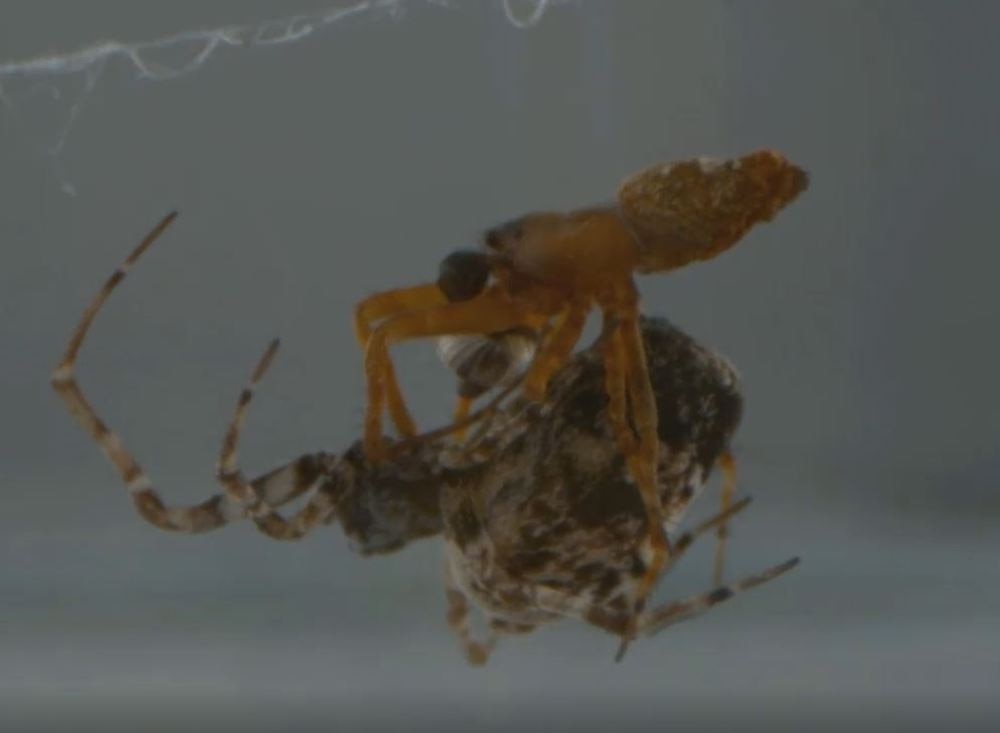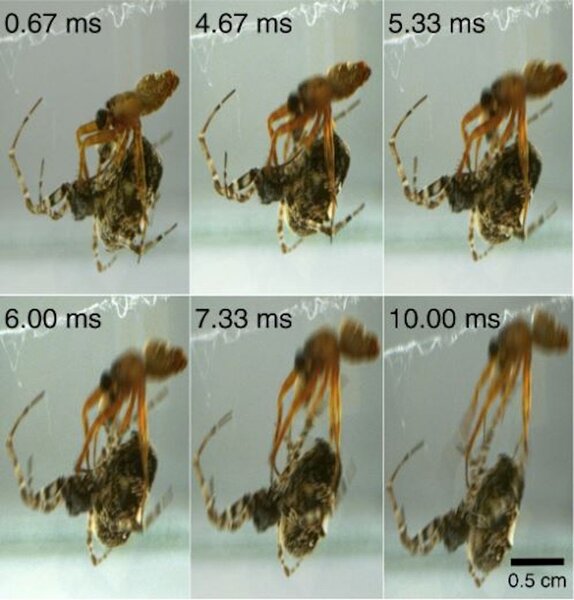Create a free profile to get unlimited access to exclusive videos, sweepstakes, and more!
Hydraulic legs help spiders escape becoming a post-mating snack
Balancing the desire to reproduce while avoiding becoming a post-coital meal means adapting a rapid escape strategy.

In the 2013 DreamWorks Animation film Turbo (now streaming on Peacock), our titular hero dreams of being a NASCAR driver, but there’s only one problem: He’s a snail, an animal which is known for its famously slow pace. Through happenstance involving a turbocharged car on the freeway, Turbo achieves his dream of becoming the world’s fastest snail and competing in the Indy 500.
In the animal world, being fast can present a survival advantage when avoiding predators, capturing prey, or getting away from mates with a tendency to snack on their paramours after mating. For males of the species Philoponella prominens — a common orb-weaving spider native to Japan and Korea — that last scenario is a constant concern. Balancing the desire to reproduce while avoiding becoming a post-coital meal means adapting a rapid escape strategy.
In a recent paper published in the journal Current Biology, Schichang Zhang from the Center for Behavioral Ecology and Evolution at Hubei University, and colleagues, described how these spiders use a hydraulic catapulting maneuver to slip out of bed just in the nick of time.
P. prominens often live in large communities numbering hundreds of spiders who have all set up their webs next to one another. These spider neighborhoods make finding a mate easier, but being in proximity to a female spider can be a fatal proposition for males.
“When we were studying the sexual behavior of this communal spider in the field, we found that mating was always ended by catapulting,” Zhang told SYFY WIRE.
Immediately after mating, males of the species were observed rocketing away from their mates at rates of up to 88.2 centimeters per second. That amounts to approximately two miles per hour. That might not sound fast, but males measure 3 millimeters on average. Scaling that up to human sizes, it would be the equivalent of sprinting away at 1,200 miles per hour.
In order to capture the movements, researchers set up high speed cameras to act as technological voyeurs, observing the spiders’ mating behaviors, including the rapid escape at roughly 1,500 frames per second.
“Locomotion of the spider legs relies on an inner hydraulic mechanism. In our study, we found that the surface area of the tibia-metatarsus joint in the first par of legs are significantly larger than that of any other joints,” Zhang said.
To make their escape, male spider curl up their forelimbs on the body of their mates like a closed fist and use them to launch themselves away in the blink of an eye. Generally speaking, kicking your partner immediately after mating might be considered assault, but for P. prominens there’s little choice. Observations of spider mating habits confirmed that a quick escape is crucial to the long-term survival of males.
In one set of experiments, researchers blocked the males from catapulting away and found that they were quickly consumed by the females. Unlike jumping spiders, who also use hydraulic systems to achieve rapid movements in the pursuit of prey, P. prominens appears to have evolved this specifically for sexual escapes. Zhang stated it was not observed in any other circumstances.
“It is only for males to escape the sexual cannibalism of females,” Zhang said.
Moreover, an ability to perform this catapulting maneuver appears to be required in order for the males to successfully mate, regardless of whether they’re able to make their escape after the fact. In cases where one or both of the first pair of legs was damage or removed, males were observed courting females but not successfully mating. This was not the case when any of the other legs were damaged or removed.
Dating isn’t easy, no matter what species you are, but at least we don’t have break land speed records just to survive having kids.



























